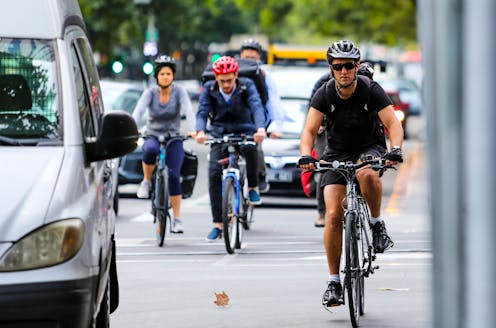Why do so few people cycle for transport in Australia? 6 ideas on how to reap all the benefits of bikes
- Written by Melanie Davern, Associate Professor, Director Australian Urban Observatory, Centre for Urban Research, RMIT University

Less than 1% of the 12 million Australians who travelled to work on Census Day in 2021 rode a bicycle to get there.
Bicycles are readily available and affordable. Cycling also supports healthy, liveable and sustainable cities.
Yet most of us shun this form of transport in Australia. The number of people cycling to work fell by 26.4% between 2016 and 2021.
So, on World Bicycle Day, we ask why is this form of transport so undervalued and neglected?
We offer the following ideas about what needs to happen so more of us use bicycles for everyday transport.





